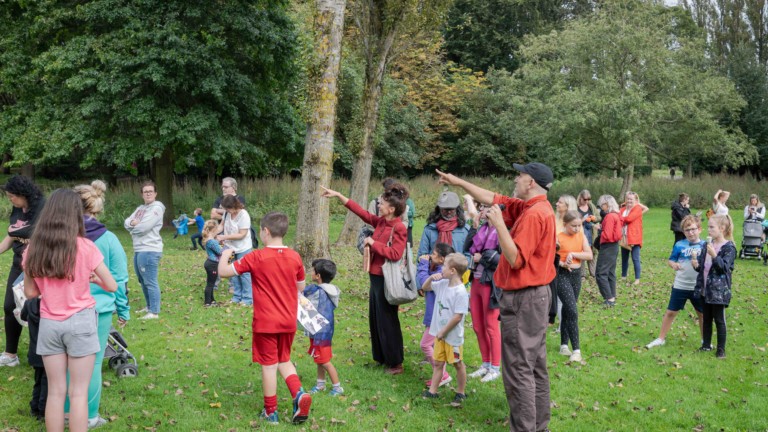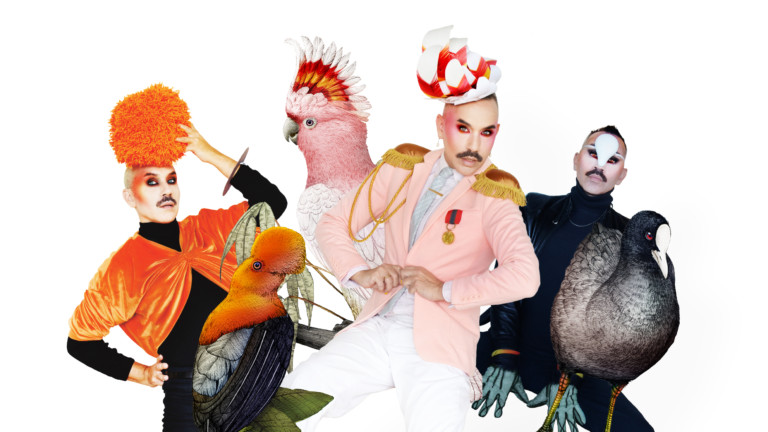Heart of Glass are producing a project I'm bringing to St Helens and Knowsley this September, as part of A Sense of Green. I will be delivering workshops from the 11th - 15th September, with two sessions open to the public. I’m delighted to be visiting Shakespeare North Playhouse for the first time, and to help promote my workshop they asked if I would bring together some gentle references of bird illustrations that feature in Shakespeare’s Macbeth (on stage there this September).
Below is a range of drawings that stretch back from the beginning of what has become Birds Can Fly. It’s interesting for me to see how this process (and my many hairstyles) have evolved since 2020. In my workshops I’ll be explaining more about the process, sharing tips on drawing and encouraging you to draw and gently reference your own birds - book a free place for the session.
And so to Macbeth…
I have some memory of studying the play at school - as I was partly schooled in Edinburgh, I’m sure it was an essential part of the curriculum. Here I focus on the significance of the birds featured, rather than attempting to interpret the meaning of the play. (If you want to discover more about how to understand the play I found this lecture from Harvard in 2007, a very insightful refresh.)
As is my want, I went down a YouTube rabbit-hole to watch many past productions of 'the Scottish play' to see which birds might be relevant. One of my favourite performances (below) stars a rather dashing Ian McKellen as Macbeth and the masterful Judi Dench as Lady Macbeth.
I dug out my copy of The Complete Works of William Shakespeare and studied the text. The first mention of a bird occurs in Act I, Scene II and has been the motivation for a new drawing and gentle reference of the Golden Eagle. The Golden Eagle is also native to Scotland, so seems especially relevant.
This article discusses the birds featured in Macbeth, and reveals the evolution of the meaning of birds:
“Birds make frequent, and often noisy, appearances in Macbeth. There are sparrows, eagles, ravens, ‘martlets’ (house martens), owls, falcons, crows, chickens, kites, ‘maggot-pies’ (magpies), choughs, rooks, and wrens. They croak, breed, haunt, shriek, scream, clamour, tower, hawk, kill, wing, rouse, fight, swoop, and, in the case of a little ‘howlet’ missing its wing, provide an ingredient ‘for a charm of powerful trouble’ brewed by the weird sisters.”
Act I, Scene II: “As sparrows eagles, or the hare the lion.”
I was immediately struck by the contrast between the sparrow and the eagle. The eagle has been associated with power across the world for millennia:
“Eagles play a long-standing and prominent role in Native American culture, with numerous tribes having one or two Eagle Clans and several revering eagle gods or spirits. Eagle dances are performed, which express the bird’s soaring flight, while wearing its feathers or carrying its feet are both said to convey power and success in battle.”
(Source: Birds of Myth, lore and legend, Rachel Warren Chadd, Marianne Taylor - Bloomsbury)
Sparrows were incredibly common in Britain during the Tudor age (1485-1603) and were seen as vermin due to their attraction to crops, and so, heavily persecuted.
By the 1500s the competition between humans and birds for food resources had become intense. This desperation resulted in a series of Vermin Acts, not so much to protect the poor but to create a sense of social unity. Under Elizabeth I the Act of 1566 ‘for the Preservation of Grain’ identified nineteen different birds and thirteen animals as ‘Noyfull Fowles and Vermyn’. Money was given to those who killed animals on the list.
(Source: Tim Birkhead, Birds and Us - Penguin/Viking)
Act I Scene V: “The raven himself is hoarse / That croaks the fatal entrance of Duncan” Lady Macbeth’s first great soliloquy
This Guardian article suggests that the Tudors are responsible “for bringing many native species close to extinction." Communities that failed to kill enough animals were punished with fines. Today, the House and Tree Sparrow are in decline.
Act III, Scene IV: By maggot-pies and choughs and rooks brought forth The secret’st man of blood. What is the night?”
There are many other birds referred to in Macbeth, all symbolically placed. The ‘Maggot-pie’, now known as the magpie is an interesting example of how the common names of birds evolve. The 'corvids' mentioned still retain an association with superstition and death probably because crows are known to feast on carrion.
Act IV, Scene II: Lady Macduff
Wisdom? To leave his wife, to leave his babes,
His mansion and his titles in a place
From whence himself does fly? He loves us not;
He wants the natural touch; for the poor wren,
The most diminutive of birds, will fight,
Her young ones in her nest, against the owl.
All is the fear, and nothing is the love,
As little is the wisdom, where the flight
So runs against all reason.
This is one of my favourite references to birds in Macbeth. The suggestion that one of the country's smallest birds fights against the owl to protect her young contrasts the size of the eagle, whilst emphasising the tenacity of the humble wren and humiliates Lady Macduff's husband.
I've also included two birds that aren’t featured in the play, but seem to me to have relevance: the Slavonian Grebe is a humorous nod to the weird sisters (or three witches as they are also known), and whilst the Amazonian Royal Flycatcher is a bird native to South America, it’s ‘crown’ encouraged me to make my own and reference the Green King.
The Gentle Reference
The gentle reference of the Golden Eagle is a return to a more simple process. I dusted myself in gold dust, coloured my hair with eye shadow and paint and wore my brown vintage flight jacket, and brown trousers, simple! The ‘eagle-eyed’ amongst you may spot that I’m wearing a small dagger ear-ring which is intended to refer to one of the most famous quotes from Macbeth:
Is this a dagger which I see before me,
The handle toward my hand? Come, let me clutch thee.
I have thee not, and yet I see thee still.
I even dusted my hands in yellow to echo the amazing talons of the Golden Eagle. This one is more restrained, and might just encourage you to try it yoursel? You don’t need a vast wardrobe and crafting skills all the time!
A huge thank you to Paul for writing this behind-the-scenes peek at his research, imagination and artistic process.
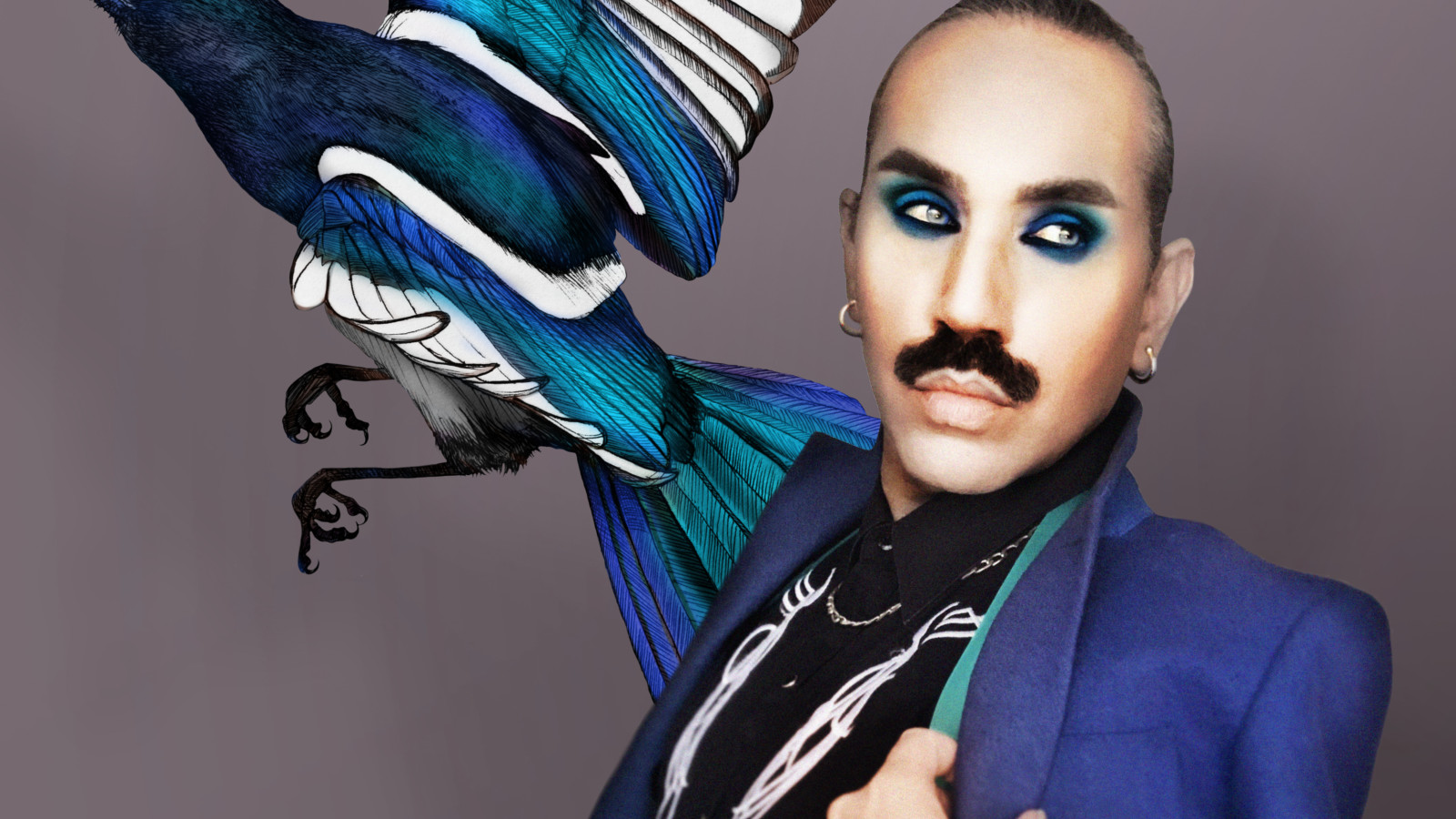
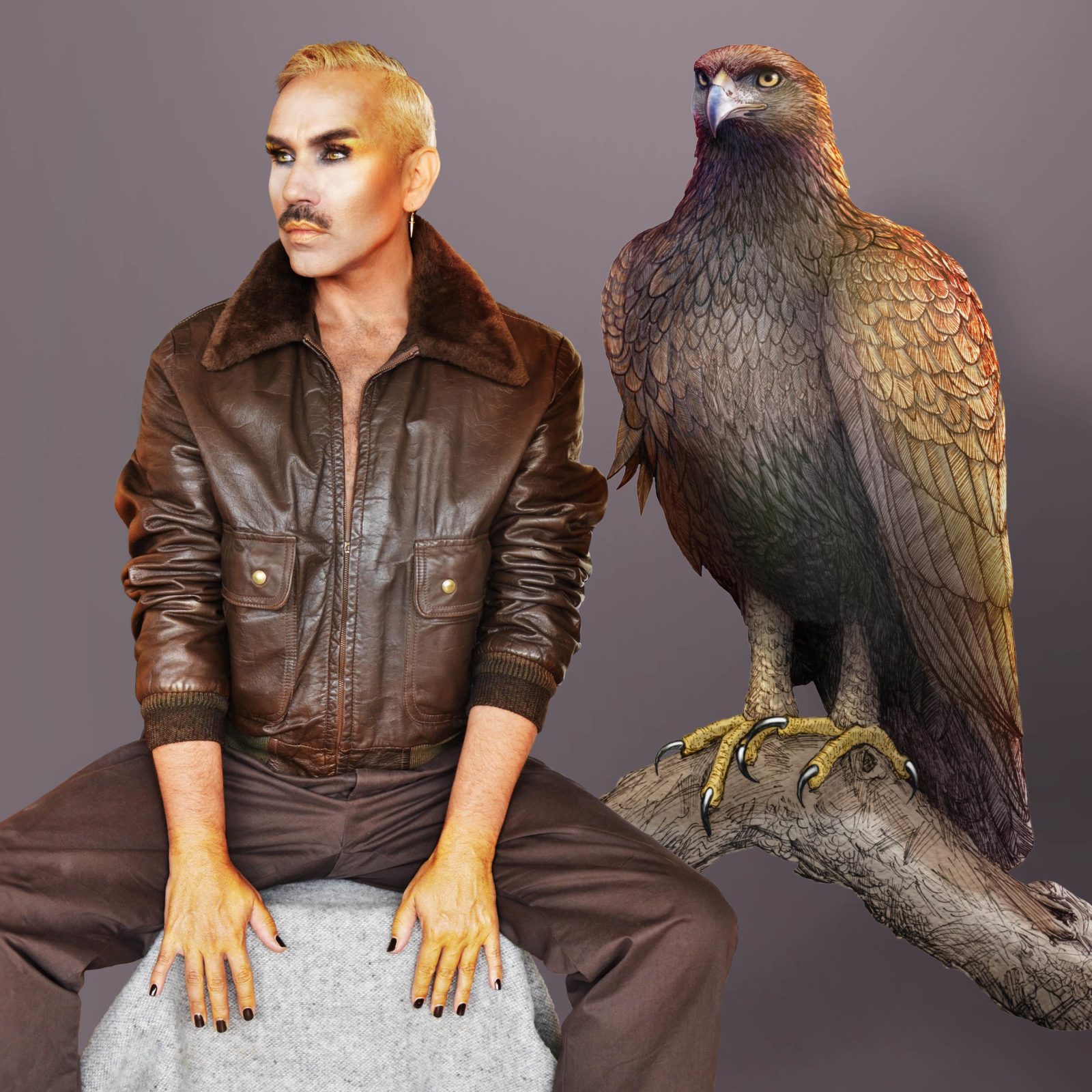
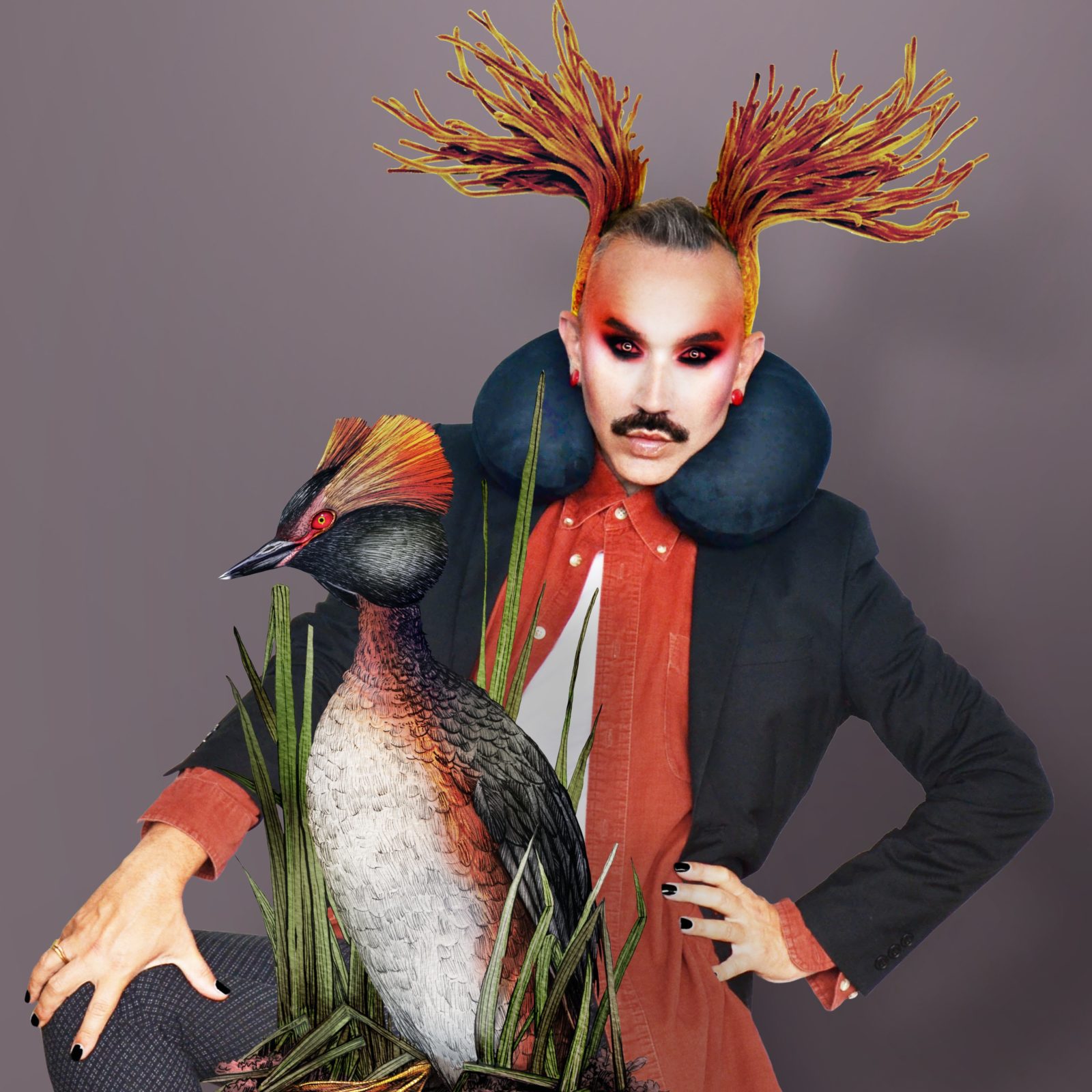
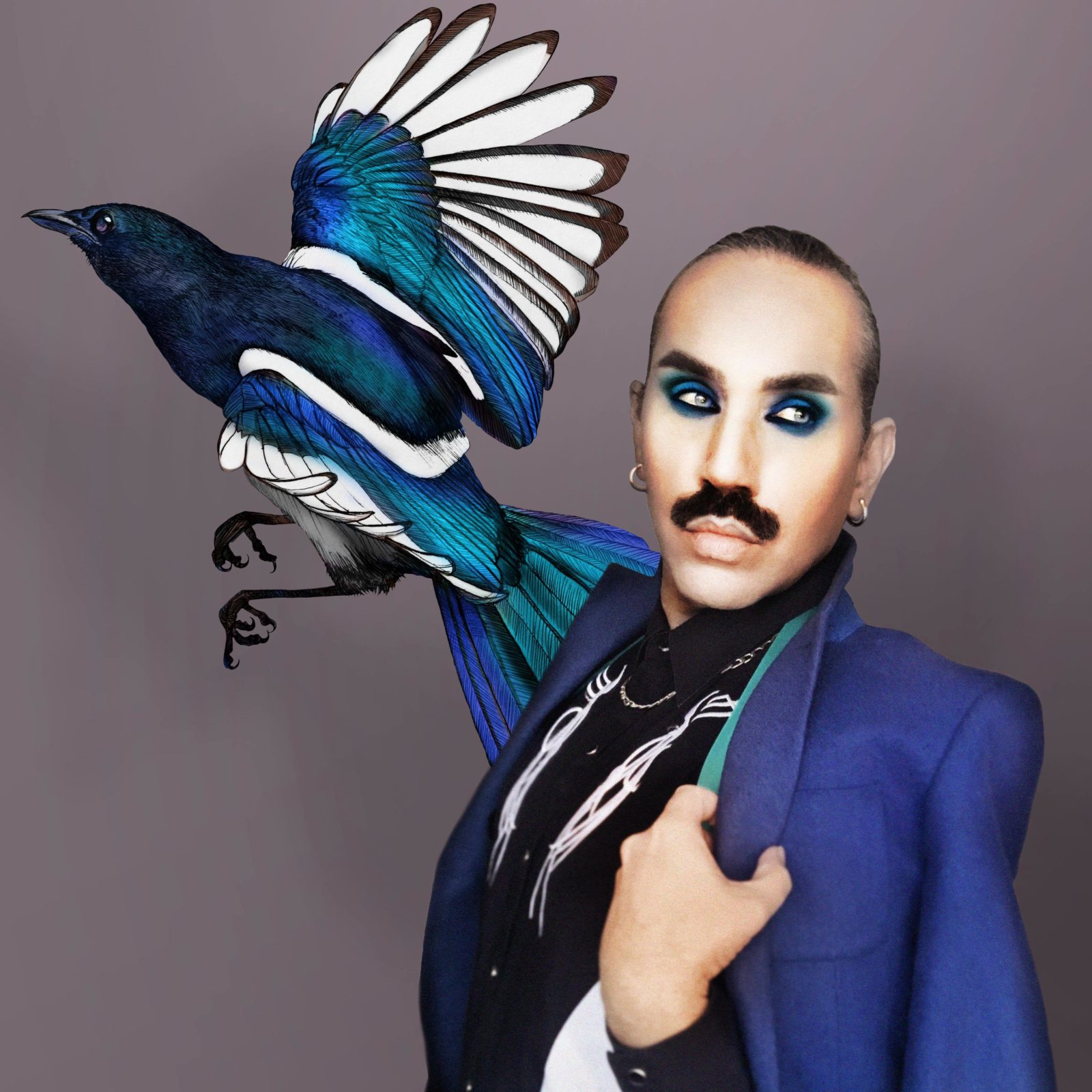
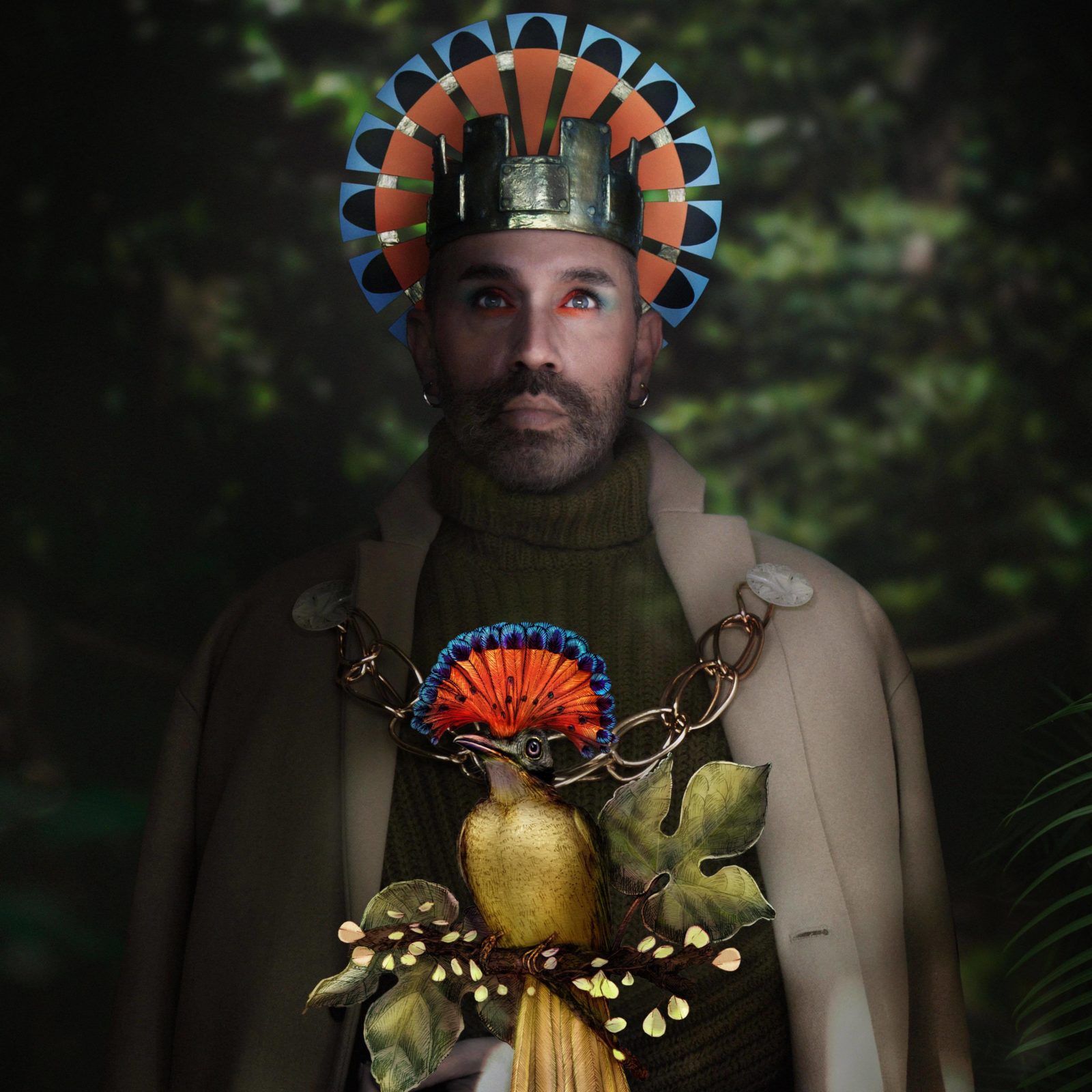
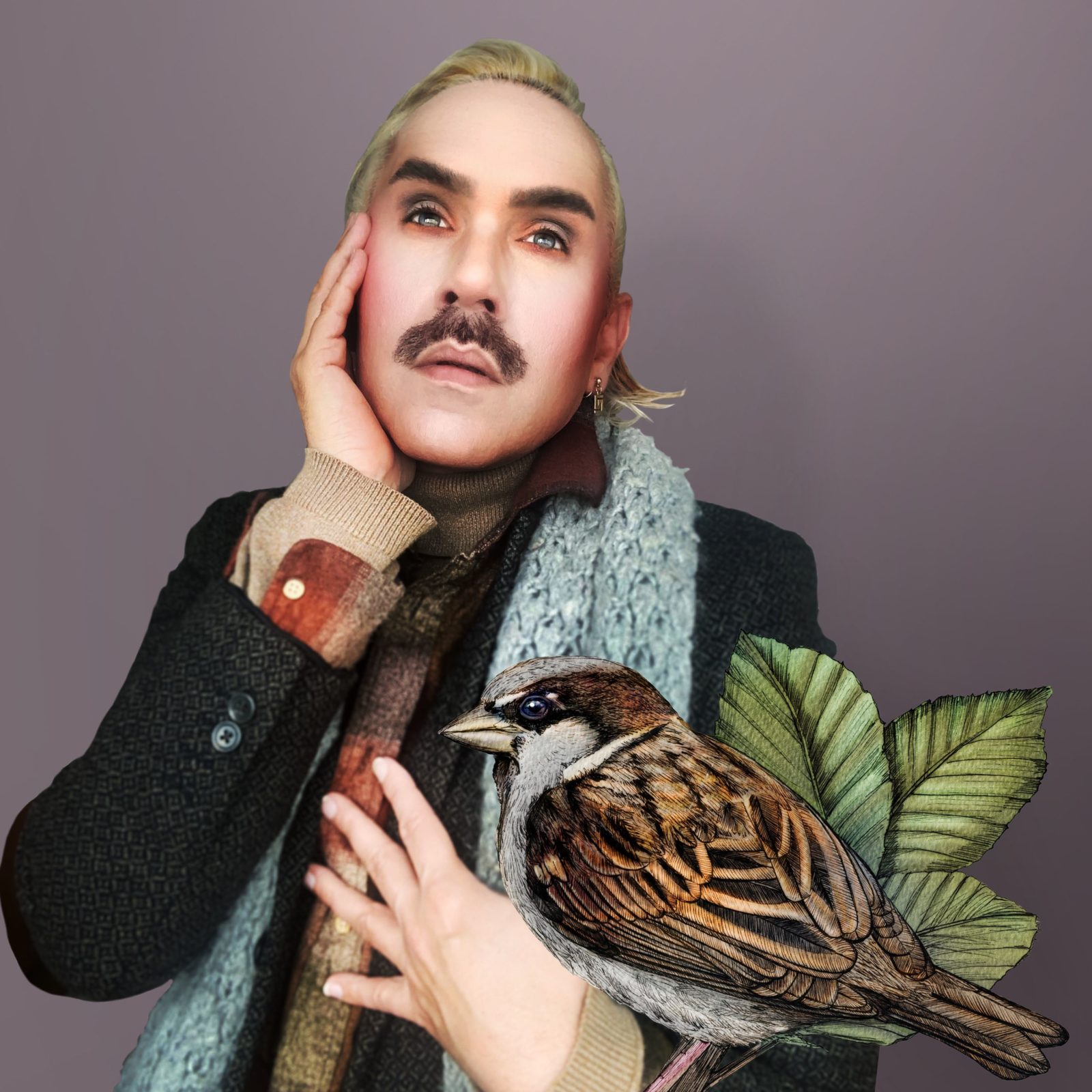
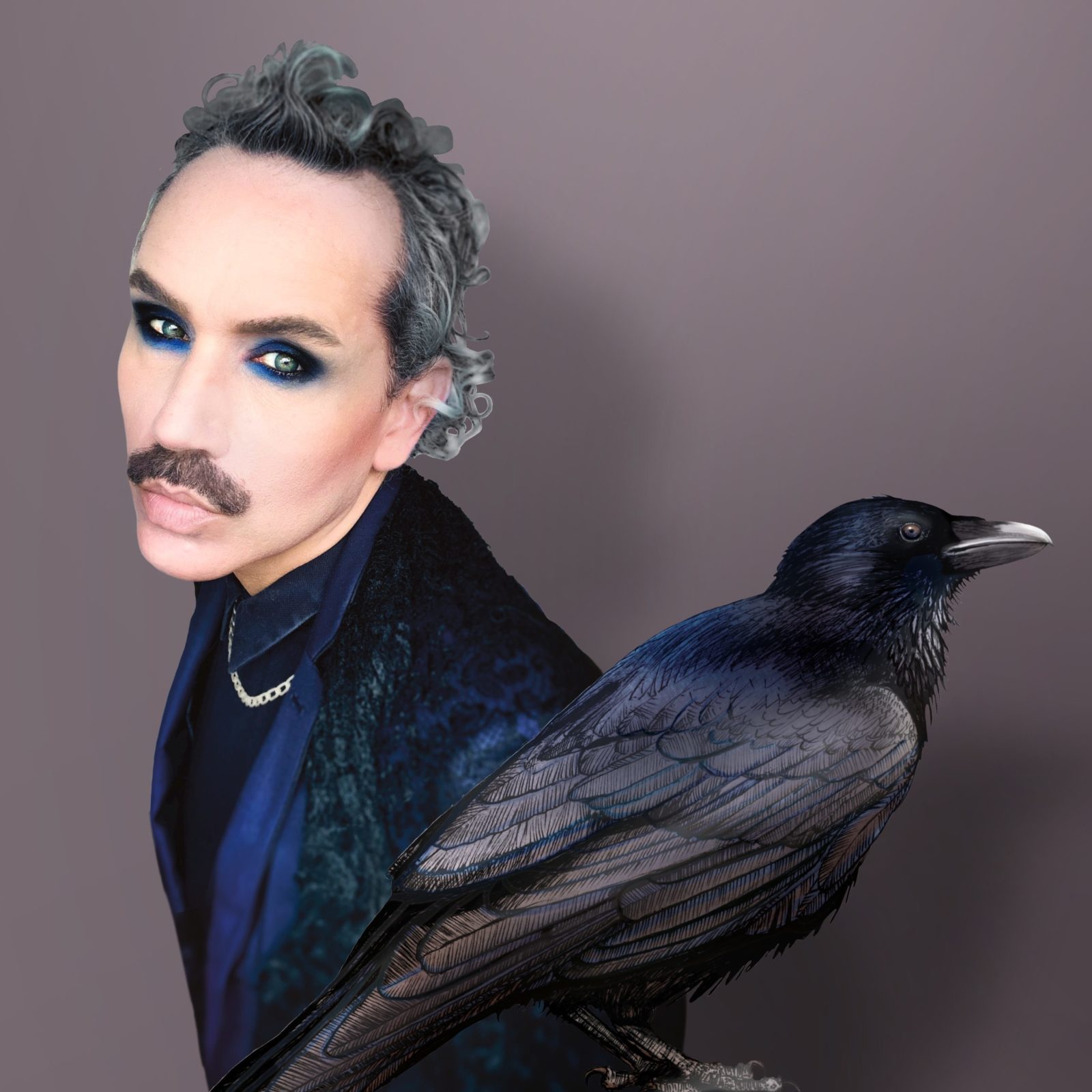
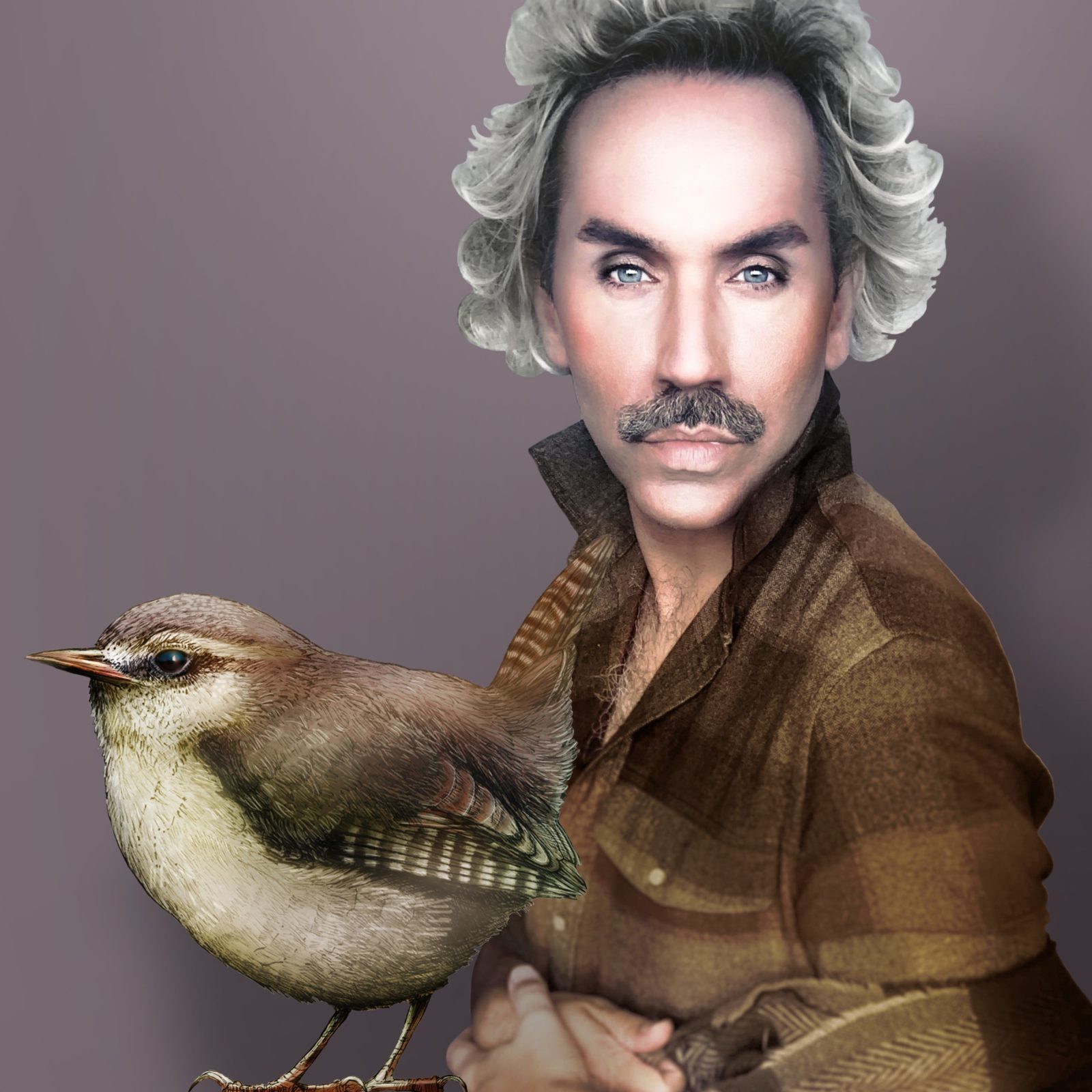
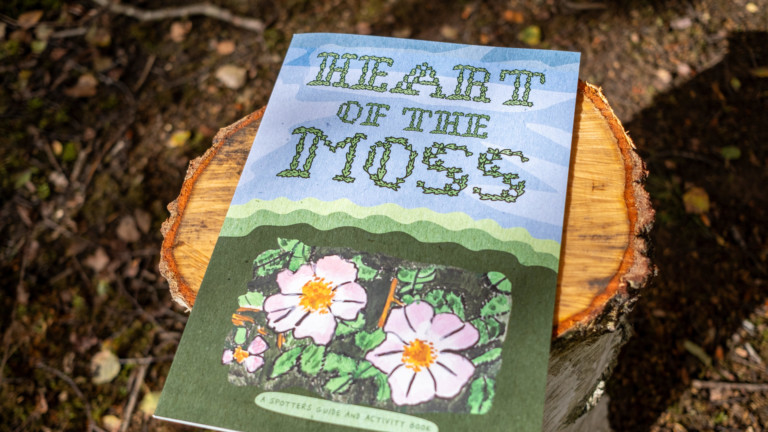
 Free
Free